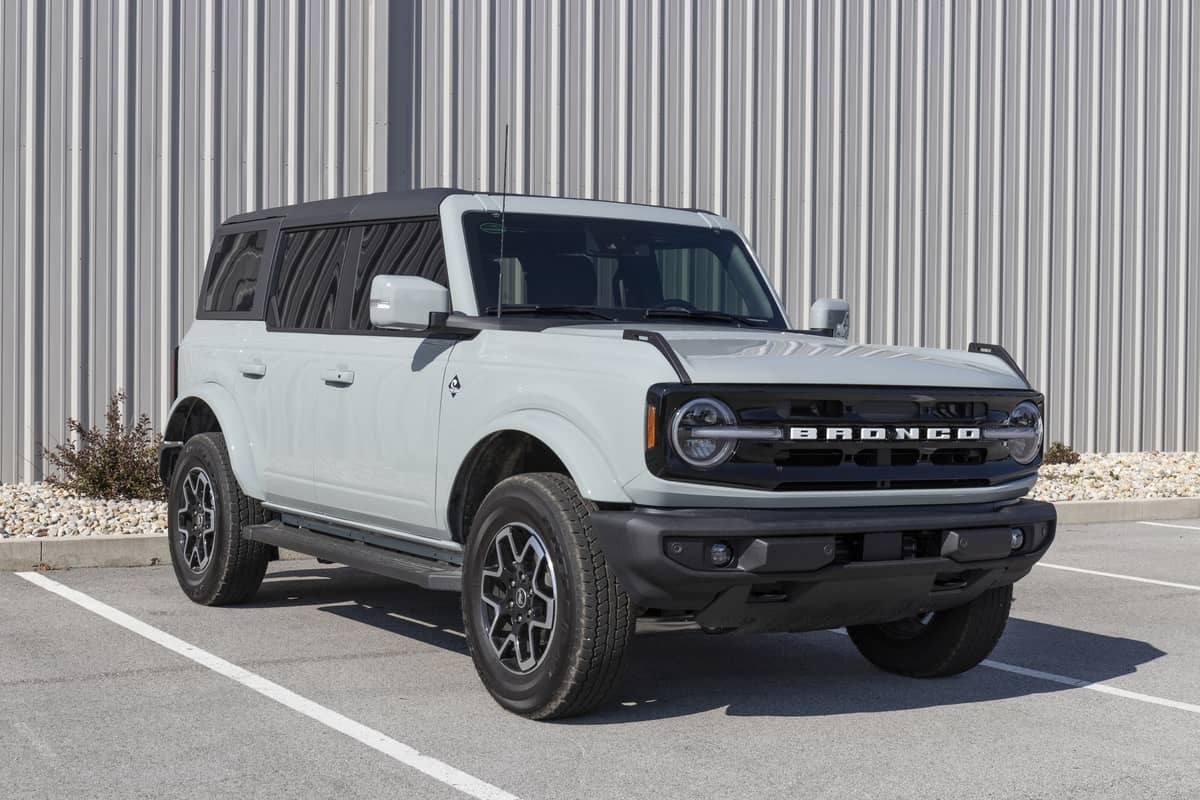Knowing whether or not your car is safe for flat towing is essential. You do not know when you may need to tow your vehicle. Flat towing refers to pulling a vehicle on all four wheels from one location to another using a puller or other car, usually because it is low on gas or has mechanical issues. So, is your Ford Bronco Sport safe for flat towing?
The Ford Bronco Sport cannot be towed without significant damage and wear to the car’s transmission and driveline components that need lubrication from the engine-driven pumps. That’s because this model lacks a neutral function to disconnect the vehicle’s driveline components for safe towing.
Continue reading this article to understand why you should not tow your Ford Bronco Sport when to make exceptions, and alternatives to flat towing!

Why Can’t a Ford Bronco Sport Be Flat-Towed?
The Ford Bronco Sport is not engineered for flat-towing and thus sustains significant damage and wear on its transmission and driveline components. It lacks a mechanism for disconnecting the driveline components even when the car is in the neutral position.
Usually, flat-towing a vehicle causes wear and damage on its transmission and driveline components that need lubrication from the engine-driven pumps. Models such as the standard Bronco allow drivers to place the transfer case in neutral, effectively disengaging the driveline components to prevent wear and damage.
The Ford Bronco Sport lacks this capability. That means the driveline components and the car’s transmission remain engaged during flat-towing, which risks significant damage.
According to a Ford spokesperson, they left this out because market research showed that most Bronco Sport owners are not looking to flat-tow their cars. Thus, the manufacturers opted not to include towing features in the Ford Bronco Sport.
Therefore, placing the automatic transmission in neutral in the Ford Bronco Sport does not protect the car’s transmission system and driveline components during flat towing. You would need to spend more money on aftermarket lubrication and driveline disassembly to reduce damage from flat towing.
Exceptions to Flat-Towing a Ford Bronco Sport
The Ford Bronco Sport is not engineered for flat towing as it compromises the car’s transmission and driveline components. There is no ideal situation for recreational towing. So what should you do if you find yourself in an emergency with no alternative to flat-towing?
The first important warning for vehicles with a steering wheel lock is to ensure the ignition is in accessory or on position during flat towing.
You’ll also want to use the manual park release procedure to prevent damaging the car’s transmission. It involves the following steps:
- When shifting from park (P) to gear, fully press and hold the brake pedal.
- Rotate the outer ring of the car’s transmission selector clockwise and select the gear you prefer.
- Release the brake pedal and confirm that the gear you selected remains in place.
Failure to follow this process when shifting to gear from the park position prevents power transfer to the wheels and, in the process, destroys the transmission.
You should also ensure that you tow the car in the forward direction (forward direction towing). Flat tow the car at a maximum speed of 35 mph (56 km/h) and a maximum distance of 50 miles (80 km).
Follow these instructions in case of an emergency and consult an authorized dealer if you are unsure of your car’s configuration. It is advisable not to attempt emergency towing when unsure of the steps because you risk destroying your Ford Bronco Sport’s transmission system.
Alternatives to Flat-Towing a Ford Bronco Sport
Since flat towing is not an ideal solution for moving your Ford Bronco, what alternatives do you have? Below is a review of the alternatives:
Using a Tow Dolly
The first option you should consider is a tow-dolly. Dolly towing allows you to transport your car behind an RV with the car’s two front wheels off the ground. You should, however, note that you can only use the tow-dolly if you use a front-wheel-drive (FWD) model.
First, put the car in neutral before placing the tow dolly’s ramps in front of the tires. Next, slowly push the vehicle to the dolly’s edge before strapping the wheels and securing your car using safety chains. When that is done, you are free to safely tow the vehicle.
The next time you want to dolly-tow your car, I recommend using the DEMCO wheel net tow dolly. It comes with adjustable straps made from industrial-grade polyester for maximum hauling strength and an exceptional load limit of 3,330 lbs (1.67t). It’s also resistant to UV rays, dirt, abrasion, and water, making it a reliable all-weather towing companion.
Using a Flatbed
Rear-wheel drive (RWD), all-wheel drive, and four-wheel drive (AWD/4WD) cannot be towed using a two-dolly. They require an alternative towing mechanism.
If you have a vehicle unsuitable for dolly towing, consider flatbed towing as a viable alternative. The car is placed directly on the truck and transported with no risk of damage from unsafe towing in flatbed towing.
Make sure you understand important aspects such as the weight ratings and the safety measures applied when loading and unloading a flatbed trailer. The weight ratings explain the maximum weight limit you should observe in different cases. That includes the gross vehicle weight rating. This rating gives the maximum acceptable weight that factors in the vehicle’s weight, the passengers, cargo, and accessories.

Conclusion
Flat towing is not ideal for a Ford Bronco Sport because it exposes the vehicle to severe damage and wear. Therefore, you should consider using a tow-dolly or a flatbed, depending on your car model.
While flat towing is not recommended, you may have to flat-tow your car in an emergency. In such cases, follow the instructions provided above to avoid damaging your car’s transmission.
You should also remember to observe the necessary precautions. For example, observing the flatbed tow weight limits to protect yourself by preventing mechanical breakdowns and accidents.
